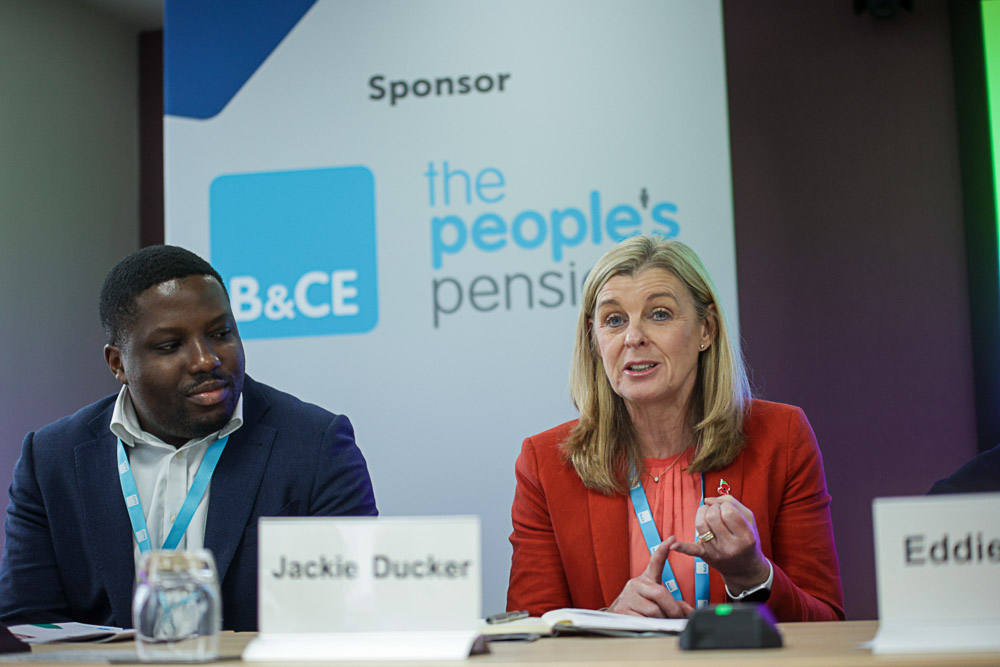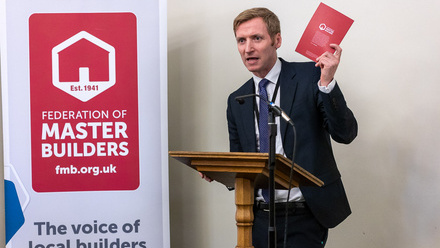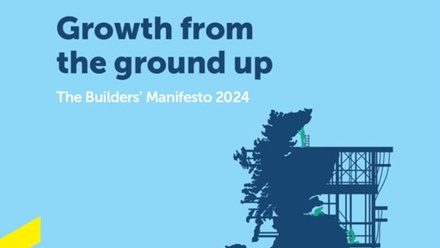Reversing the skills shortage was hot on the agenda at the FMB’s 2022 Building Conference. As an industry, how can we empower people to choose construction as a career?
Over the next 10-15 years, we can expect 33% of the current workforce to retire, with a shortfall in the number of young people entering construction. Key to this is making sure construction is open to everyone – and much needs to be done:
- Just 6% of the workforce are people of colour.
- Women are under-represented, making up just 14% of the construction workers (and only 2% on the tools.
- 14% are registered disabled under the Equality Act.
(Data via CITB)
A panel of industry stakeholders and experts took to the stage to discuss what is being done and what needs to improve.
The panel:
Shenaaz Chenia – CEO, YouthBuild Ventures UK
Jackie Ducker – Executive Director – Customer & Product, CITB
Luke Emery – Lowry Building & Civil Engineering, Master Builder Awards Apprentice of the Year, 2021.
Amos Simbo – Founder of BPIC Network
Eddie Tuttle – Director of Policy, Chartered Institute of Building (CIOB)

How do we make construction a career to aspire to?
Jackie Ducker talked about the need to make construction attractive to help fulfil a shortfall of around 50,000 vacancies in construction each year. "Making construction the top choice of career for our young people is critical for our success.”
She noted that interest levels are high, but young people are often not aware of the breadth of roles available, which is key to driving diversity and inclusion in the industry: “The CITB Go Construct website has about 1.1 million visitors per year looking at about 180 jobs at the moment. So, I know that people are desperate for jobs like bricklayers, carpenters and general builders, but there’s such a range of jobs available. We have to inspire and raise that awareness through giving people information at a young age and inspiring them through ambassadorial work, so young people think 'actually, this is the future for me'.”
She continued: “There are some fantastic schemes out there like the SkillBuild competition, which is the Olympics of the trades that we all need - tilers, plasterers, carpenters, painters and decorators. So, we’re raising the profile that way.”
Shanaaz Chenia agreed; “We need to collaborate in the way we inspire people. Early engagement with going into schools, going in there to represent the industry and the vast array of opportunities it offers young people. We’re an incredible industry with a lot of options for people that they don’t see at first sight. Also having very clear career pathways is important, and facilitating the culture of lifelong learning, so people coming into the industry recognise that they will be supported and have options to grow.”
Apprenticeships – is the balance right?

“When we talk about tackling the shortage, we have to look at the apprenticeship” says Luke Emery, now a qualified carpenter at FMB member at Lowry Building & Civil Engineering.
As someone with first-hand, recent experience of apprenticeship learning, Luke identified some of the short fallings of the current system: “Courses are not correctly weighted. If you enter at age 18 after A levels, to become qualified you have to do four years in a college. But if you want to manage carpenters, that's only one year of training.”
Encouraging the take-up of apprenticeships is important, but the content of the courses forms the template for future standards in the industry. “With weighting, a lot of it is towards what the apprentice’s 'book work' is like,” said Luke. “I would never downplay the benefits of the academic side of the qualifications, however, what’s that going to do when you’re asked how to hang a door? Or install skirting? That’s completely down to the unregulated experience you get on site.”
So, streamlining courses and placing the emphasis on practical training could encourage young people into construction and improve building standards.
“Apprenticeships are a great route to get into our industry” said Jackie “and there are things to support you as the employer as well as the apprentices, but we recognise that it can sometimes take too long.”
Jackie also highlighted that CITB have trialled a successful Brickwork Academy pilot scheme with colleges in Liverpool and the West Midlands. It aims to address the national shortage of bricklayers – fast-tracking students into the workplace. “If you’re a bricklayer, you have to learn everything form A to Z, but if you’re a volume housebuilder you don’t need to know how to build gothic arches.”
Some of the responsibility lies with building companies, including SME businesses, who are responsible for training 71% of the apprentices in the industry*. “Part of our role at CITB is to set the qualifications and standards that are meeting the need of industry,” said Jackie. “We need construction companies to tell us what they need, and that might help break down some of the barriers for young people.”
High dropout rates need to be addressed
A contributing factor to the skills shortage is the significant number of people who exit the industry either during or immediately after training and apprenticeships.
Shenaaz proposed a practical approach: “If you look at FE [further education] only 12% who complete their diploma come into the industry, higher education at university only 40%. So that’s your starting point – impact the way they learn. Make it more practical. Let's make the learning fit for purpose from the start.
How can SME builders play a part?

Amos Simbo noted “It’s a challenge for the industry. You’ve got to have different players on the field of you want different outcomes. When we talk about lack of innovation, attracting a different demographic of people to the industry can bring new ideas to the table, but it’s not an aspirational career for a huge chunk of people. 2-3% of people working onsite are female, and we have a real issue addressing this in a proactive way.”
Could there be a co-ordinated effort to change the culture in the industry? Eddie Tuttle commented “We have to professionalise the industry, the way that we work.”
Jackie agreed “That means a skilled, competent, inclusive workforce for the future. The industry has to work together.” She proposed that industry leaders should be, and are, leading the way: “Through the Construction Leadership Council (CLS) there is a ‘Changing the Culture’ workstream, helping some of the smaller companies with tools and resources that help you to become more inclusive.”
When should we start talking to young people?

The panel agreed that taking a grass roots approach could be the best way to encourage more young people into construction, showcasing the wide range of careers available and encouraging diversity and inclusion through representation.
Eddie spoke about the model shown in Germany where construction organisations go into schools to speak to children as young as 11 – fostering appositive image early on. He commented “For me it’s about learning lessons – where are we as an industry, what are the issues, and I think we need to do a lot more work, certainly at school level to create a framework that shows the industry as a career choice, rather than a last resort.”
But with schools judged by their academic achievement, how can this be achieved and what changes need to be made at a policy level? Jackie highlighted that the new Welsh GCSE in the Built Environment, alongside T Levels for 16-18 year olds in England were encouraging – demonstrating that construction is for everyone, from all walks of life.
She summed up: “We have to inspire and raise that awareness through giving them information at a young age and inspiring them through ambassadorial work, so young people think 'actually, this is the future for me' and make it a well-respected career that people are proud to be in”.
*Apprenticeships in England by industry characteristics 2018 to 2019, Table 1C, DfE, 2020, available at: https://go.fmb.co.uk/2U5wUBq.







